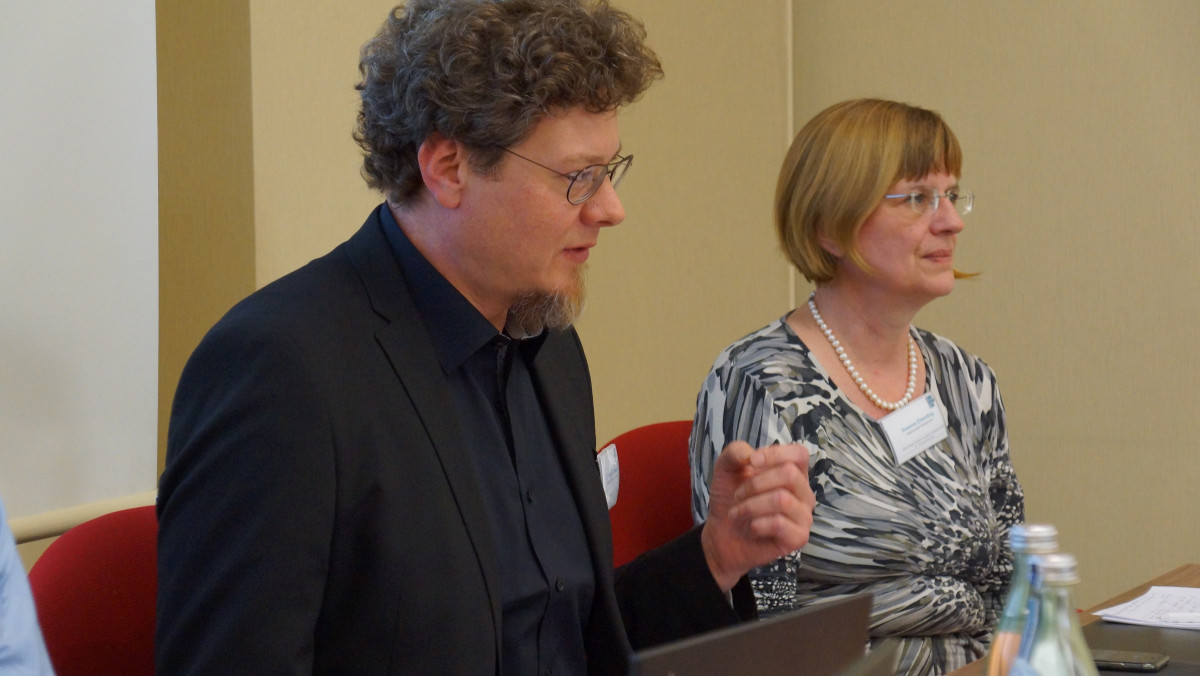Swimming blind: Key learnings from guest author Michael L. Buchsbaum, speaker at #GETJO19
As we frame the transition to renewables, one of journalism’s major collective blind spots is our misunderstanding of the actual role fossil fuels play in the overall economy. And it’s not supplying energy.
While we accept that fossil fuel systems exist to provide services to their customers in the form of cheap, reliable electricity, we must keep in mind that the companies involved operate not only to make money for themselves, investors and shareholders, but also to serve as outlets for original or “Ur” wealth. In a deliberately inflated economy dependent more on complex financial instruments than on hard cash or hard sense, fossil fuel resources comprise vital, non-derivative assets that are not only bankable, but “leverage-able”, allowing producers to borrow against them.
Ever since James Watt reinvented the steam engine in 1776 in the very beginning of the industrial revolution, the “winning” or production of these fuels, as well as their shipment and planned destruction, has served as the global economy’s foundational bedrock. And since day one, coal has been a part of it. Watt’s engine’s very purpose was to pump water out of flooded mines to gain access to more coal.

Just like in Watt’s day, we burn fossil fuels to make steam to make energy, a major use of which is to help us access more fossil fuels.
Though we perceive them today mainly as electrical producers, companies like RWE Energy or American Electric Power in effect serve as outlets, anchoring us to an integrated system now so embedded in our culture, that its real rationale has become nearly invisible. It’s like asking the fish if it sees the water in which it swims. Just like in Watt’s day, we burn fossil fuels to make steam to make energy, a major use of which is to help us access more fossil fuels.
One becomes more aware of this water, to speak, when you either travel to or live within an integrated energy production zone such as coal-bearing Appalachia, Germany’s lignite mining Rhineland, or the heavily fracked Front Range area near Denver, Colorado: now a petro-colony. Having made a home near all three, I’ve been more or less dunked into this pond virtually my whole life. Maybe that’s why I’ve also made a photojournalistic career covering coal and energy production, working with miners as well as documenting the industry along the way.
Taken as a whole, while fossil power plants do provide a vital service in the form of generating electricity, they also function as the rationale for the mining, transport and burning of coal or gas, the aggregate costs of which are all eventually passed onto the consumer. Having evolved out of the industrial revolution, this closed-loop system of extraction, shipping, and “energising” fossil fuels is the financial skeleton and driving force underlying our current economy.
So when we consider renewables in terms of their clean production and lack of emissions, we often forget that renewables don’t require trainloads of wind power nor opencast solar pits. In this sense, renewables represent a clear and present danger to the fundamental structure of our original financial entities that were initially built not to provide energy, but to provide profits along a vast supply network for a handful of banks and investors.
Predicated upon tremendous holdings in fossil fuel dependent sectors, when we talk about 100% renewable energy systems, for established too-big-to-fail banks and central lending institutions, the 21st century economy means not only killing off King Coal, but potentially cratering the whole kingdom. Making redundant hundreds of mines, thousands of miles of railways, most power plants, and the vast support systems that have grown up with the electrical industry, risks billions of Euros and dollars of stranded asset write-downs. And that’s before even counting the vaporised value of the primary energy commodities themselves.
But ironically today, one of the most coal dependent companies in the world doesn’t mine a single ton of it. BNSF, America’s largest railroad and second biggest user of diesel fuel worldwide, is also by far America’s biggest coal shipper. After investing billions in developing the rail infrastructure in Wyoming’s Powder River Basin, where half of all America’s coal is mined, the sprawling railroad serves as a vital corridor moving enough coal to provide over 10% of the nation’s electricity. Privately owned by billionaire investor Warren Buffet and his Berkshire Hathaway company, which bought it for over $45 billion in cash and stock in 2009, it remains the crown jewel in their holding’s portfolio.

Worldwide, as renewable energy further disrupts this complex but highly profitable integrated production-transportation-generation model, many global investors perceive “green energy” as a primary danger to the water in which they swim.
But one of the railroad’s largest customers is the also Berkshire Hathaway-owned PacifiCorp, a western US utility with over two million customers and 22 coal fired units, 60% of which, according to its own studies, are today mainly unprofitable in comparison to new renewable energy. However, given its deeply sunk roots in 19th Century industries, by further investing in renewables, Buffett risks devaluing not only much of his fossil-fuels dependent empire, but the financial edifice upon which it has been created. Less coal burning translates into less coal being mined and shipped, translating into less assets being used, reducing shareholder value, particularly as other electrical producers follow. Safely navigating a route that repurposes existing assets while integrating in new fuel sources is a matter of survival (As this piece goes to print, PacifiCorp has proposed a plan to retire several of its coal plants and covert other into solar+battery storage centres).
Worldwide, as renewable energy further disrupts this complex but highly profitable integrated production-transportation-generation model, many global investors perceive “green energy” as a primary danger to the water in which they swim. As journalists following these worried fish, it’s important for us to consider their whole stream as well.


